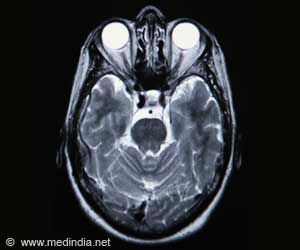
Driving at 100km/h, this amounts to reducing the braking distance by 3.66 meters - the full length of a compact car or the potential margin between causing and avoiding accidents.
The study, published today, 29 July 2011, in IOP Publishing's Journal of Neural Engineering, identified the parts of the brain that are most active when braking and used a driving simulator to demonstrate the viability of mind-reading assisted driving.
As well as EEG, the researchers, from the Berlin Institute for Technology, also chose to examine myoelectric (EMG) activity which is caused by muscle tension in the lower leg and can be used to detect leg motion before it actually moves to the brake pedal.
Whilst sat among conventional driving controls, the study's 18 participants were asked to drive a car that was displayed on a screen in front of them whilst a series of electrodes were attached to their scalp to measure brain activity.
They were asked to stay within a 20 metre distance of a computer-controlled lead vehicle along a road that contained sharp curves and dense oncoming traffic, to recreate real driving conditions, whilst maintaining a speed of 100km/h.
Advertisement
At this point, when the subjects reacted, the data was collected from the EEG and EMG. For comparison, the researchers also recorded information on the time it took to release the gas pedal and press the brake pedal, the deceleration of both vehicles and the distance between the two vehicles.
Advertisement
A recent development, implemented into this study, are hybrid systems where external lasers and sensors are able to sense when a potential crash is upcoming so that as soon as the break pedal is touched, the vehicles goes into an emergency braking procedure; however these systems still rely on a human physical response, which is where a mind-reading system could benefit.
Lead author of the study Stefan Haufe said, "Averaged over all potential detection thresholds, a system that uses all available sensors detects emergency situations 130 milliseconds earlier than a system that doesn't use EEG and EMG. We can safely say that it is mainly EEG that leads to the early detection.
"We are now considering to test the system online in a real car however if such a technology would ever enter a commercial product, it would certainly be used to complement other assistive technology to avoid the consequences of false alarms that could be both annoying and dangerous."
Source-Eurekalert













